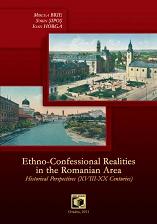Clashes of National Identities in Interwar Transylvania
Clashes of National Identities in Interwar Transylvania
Author(s): Imola Katalin NagySubject(s): Politics / Political Sciences
Published by: Editura Universitatii din Oradea
Keywords: identity discourse; alterity; we; the others; media; disputed territorry
Summary/Abstract: This paper focuses on the issues of national identity in Transylvania between the two world wars. The Great Union of 1918 brought about radical changes, with tremendous implications not only in the political field or the geographical borders of the region, but also in the way Romanian and Hungarian writers shaped their own national identities and defined themselves and each other. The regional impulse was a widespread trend, not only in the area of our research, but also in East-Central Europe. The Hungarians’ Transylvanianism and the Romanians’ creative localism alike offered a wide range of key concepts and ideas that shaped/and were shaped by the cultural context of the time. Romanians’ and Hungarians’ regionalism shared many of these concepts and ideas, although they never really sustained an open and efficient communication..The shifts that occurred in the self-defining strategies, the communication breakdowns that characterized the relationships between the two cultural milieus, the identity discourses that can be spotted in the media of that time, and the movement known as Transylvanianism are all approached with the purpose of identifying the causes that hindered real and efficient communication between Romanians and Hungarians. We shall try to find explanations by referring to certain Central-European attitudes that were operating back then.
Journal: Eurolimes
- Issue Year: 2011
- Issue No: Suppl02
- Page Range: 115-135
- Page Count: 21
- Language: English
- Content File-PDF

